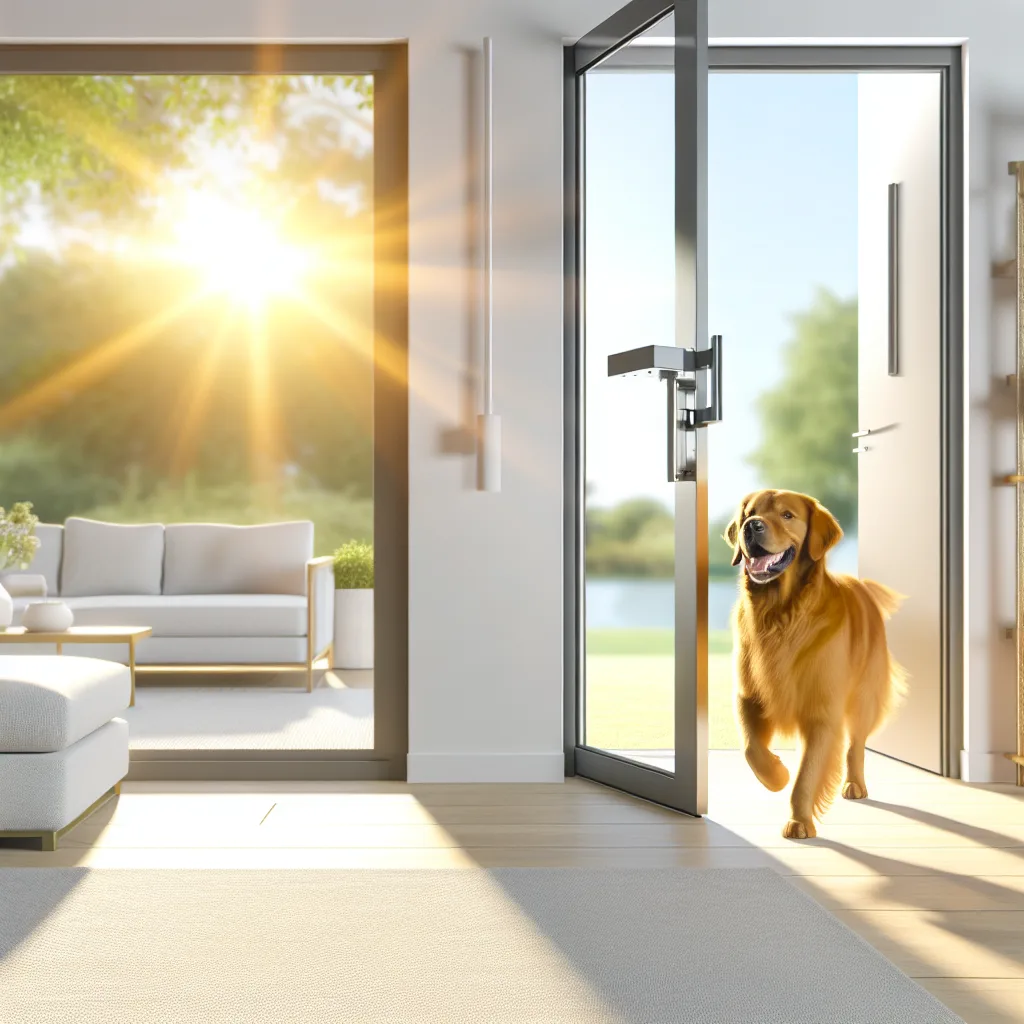From letting the pup out to boosting accessibility, here’s a real-world look at adding a remote-controlled door to your house.
Tired of Playing Doorman for Your Dog? An Automatic Door Opener for Your Home Might Be the Answer
It’s a familiar scene in my house. I’m settled on the couch, deep into a movie or halfway through a work call, and then I see it: The Look. My dog, standing by the patio door, staring intently, letting me know it’s time to go out. Again. I love him to bits, but sometimes I feel less like a pet owner and more like a full-time doorman. This exact thought process led me down a rabbit hole recently, exploring a surprisingly practical solution: installing an automatic door opener for home use.
The idea is simple: what if you could open and close a hinged patio or back door with the press of a button, just like a garage door? It’s not science fiction. This technology has been common in commercial and accessible buildings for years, but it’s becoming increasingly popular for homeowners looking for a little more convenience—or a better way to let their furry friends in and out.
So, What Exactly is an Automatic Door Opener for Home Use?
Forget the sliding glass doors you see at the grocery store. We’re talking about a motorized arm that attaches to your existing hinged door. This device physically swings the door open and pulls it shut. Most systems come with a remote control, a wall-mounted push button, or can even be integrated into a smart home system for control via your phone.
The core benefit is hands-free operation. Whether you’re carrying groceries, have mobility challenges, or are just tired of getting up every 20 minutes for the dog, it’s a huge convenience. The real magic happens when you pair it with a smart lock. Since you’ll already have a remote deadbolt or smart lock to handle the latch, the automatic opener’s only job is to do the swinging.
The Big Challenge: Inswing vs. Outswing Doors
Here’s where a little planning comes in. Many residential doors swing inward. But patios, decks, and storm doors often swing outward to save interior space. This is a key detail when you’re shopping for an automatic door opener for home installation.
- Inswing Doors: These typically use a “pull-arm” or sliding track on the inside of the door. The installation is often more straightforward.
- Outswing Doors: These require a “push-arm” mechanism. The motor unit is still mounted inside, but it uses a different style of arm to push the door open to the exterior.
It’s not a dealbreaker, but you need to make sure the kit you buy is specifically designed for an outswing door. Reading the product description carefully is essential.
Finding the Right Automatic Door Opener Solution
Once you know what type of door you have, you can start looking at products. There are a few main categories to consider.
One popular option is a residential kit from a specialized manufacturer. Companies like Olide Auto Door Systems offer complete packages designed for home use. These are often robust, reliable, and come with everything you need, including sensors and remotes. They are frequently marketed for accessibility, which means they’re built with safety and durability in mind.
Another route is integrating with your smart home setup. While more of a DIY approach, you could use a powerful linear actuator controlled by a smart relay. This requires more technical know-how but offers ultimate customization. For most people, a dedicated kit is the simpler and safer choice.
Key Things to Consider Before You Buy
An automatic door opener is a fantastic upgrade, but it’s not a casual purchase. Here are a few things to think about before you click “buy”:
- Safety First: This is non-negotiable, especially with pets and children. Look for a model with obstruction detection. If the door encounters resistance while opening or closing (like a dog’s tail or a misplaced toy), it should stop and reverse automatically.
- Power Source: Most units need to be plugged into a standard wall outlet. Make sure you have one nearby or are prepared to have an electrician install one.
- Security Integration: An automatic opener doesn’t lock your door. You’ll still need a separate lock. Pairing it with a smart lock like a Schlage Encode is the perfect combination. You can unlock the deadbolt with your phone, then press another button to swing the door open.
- Noise Level: These units have a motor, so they aren’t silent. Check reviews or product videos to get a sense of how loud a particular model is.
- Installation: Are you comfortable with a weekend DIY project? Many kits are designed for homeowner installation. If you’re not confident in your skills, especially with wiring and alignment, it’s wise to budget for a professional installer.
Ultimately, adding an automatic opener is a brilliant way to make your home work better for you and your four-legged family members. It’s a step beyond the basic smart home gadget and into the realm of true, helpful home automation. My days as a doorman might just be numbered.
